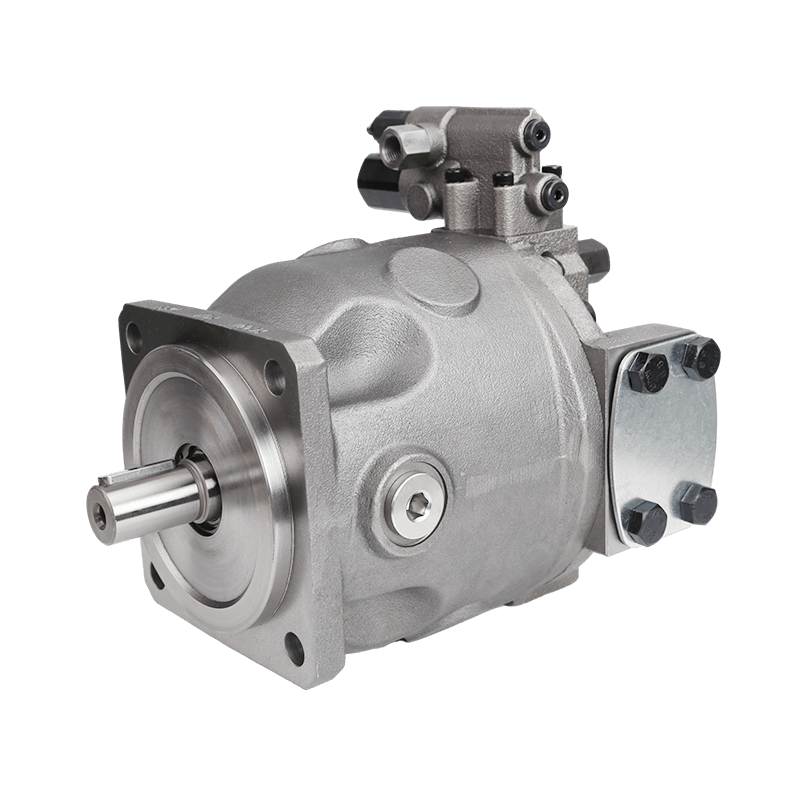Introduction
Vane pumps are a type of positive displacement pump renowned for their efficiency, reliability, and versatility. Known for their dry priming capabilities, easy maintenance, and excellent suction characteristics, they are particularly effective in low-viscosity applications. These pumps are available in various configurations, including sliding vane, flexible vane, swinging vane, rolling vane, and external vane types. Each configuration is tailored to specific needs. For instance, external vane pumps are ideal for handling large solids, while flexible vane pumps excel in generating strong vacuums but can only handle small solids. Sliding vane pumps are even capable of dry running for short periods and can handle small amounts of vapor.
In this article, we’ll delve into the working principles, structure, advantages, and applications of vane pumps, with insights on selecting the right pump for your needs
Understanding Vane Pumps
Vane pumps are positive displacement pumps, meaning they move a fixed volume of fluid with each rotation of the rotor. Unlike centrifugal pumps, which rely on kinetic energy to create continuous flow, vane pumps excel in applications requiring precise control of flow rate and pressure.
Leading manufacturers such as POOCCA specialize in designing and producing high-quality vane pumps to meet diverse industrial needs.
Anatomy of a Vane Pump
In a vane pump, you’ll find a variety of parts.
Rotor:
The rotor is a central, rotating shaft that connects to a power source, such as an electric motor or engine. It houses slots where vanes are fitted.
Vanes:
These are flat or slightly curved blades that extend radially from the rotor. The vanes slide in and out of the rotor slots as it rotates, maintaining contact with the pump housing to create sealed compartments.
Cylindrical Housing:
The pump housing encloses the rotor and vanes, providing a sealed chamber where fluid is moved.
Inlet and Outlet Ports:
The pump features inlet and outlet ports to facilitate the suction and discharge of fluid. Valves or check mechanisms may be incorporated to regulate fluid flow.
Cam Ring or Ring Sleeve (optional):
Some vane pumps use a cam ring to ensure continuous contact between the vanes and the housing, enhancing efficiency and minimizing wear.
How Vane Pumps Work
The functioning of a vane pump can be divided into three phases.
Fluid Intake:
As the rotor spins, centrifugal force or spring action pushes the vanes outward, creating an expanding chamber between the vanes and the housing. This expansion generates suction, drawing fluid into the pump through the inlet port.
Fluid Compression:
The rotating motion of the vanes moves the fluid through the pump chamber. As the fluid approaches the outlet side, the chamber size decreases, compressing the fluid.
Fluid Discharge:
The compressed fluid is expelled through the outlet port. A check valve prevents backflow, ensuring smooth and consistent discharge.
Types of Vane Pumps
Different types of vane pumps are mainly classified according to how they’re lubricated.
Oil-Lubricated Vane Pumps: Oil Lubricated Vane Pumps work, by supplying oil into the pump housing to ensure lubrication of the vanes and walls inside the pump itself This method helps minimize wear and tear on the pump components due to the presence of oil in the discharged fluid these pumps are not ideal for use in applications such, as water treatment.
Dry-Running Vane Pumps:Dry-running vane pumps are designed to function without the need for oil lubrication to suit scenarios that require the reduction of oil contamination.
Advantages and Disadvantages of Vane Pumps
Advantages:
Self-Priming:Self-purging feature allows vane pumps to fluid into the system without requiring priming beforehand.
Smooth Flow:Smooth Movement of Liquids; They provide a gentle flow that’s perfect for accurate tasks.
Dry-Run Capability:Sliding vane pumps can run without any liquid for periods without suffering harm.
Ease of Maintenance:Maintenance is easy, with their design, which makes it a swift and budget-friendly process.
Versatility:Vane pumps are capable of handling a range of fluids from liquids, with viscosity to small amounts of vapor.
Disadvantages:
Not Suitable for High Pressure or High Viscosity:Vane pumps are best suited for pressure tasks and may not be the most effective choice for dealing with highly viscous fluids or high-pressure situations.
Vulnerability to Abrasives:Exposure to materials poses a risk of increased wear and shortened longevity for the pump due to the presence of particles, in the fluid.
Complex Housing Design:Housing complexity in design can vary between the simpler pump types.
Applications of Vane Pumps
Hydraulic vane pumps are used across a wide range of industries for their efficiency, reliability and compact design. Common applications include injection molding machines, presses and CNC tools in the manufacturing industry; steering, lifting and braking systems in mobile equipment and vehicles; and in the energy, marine and aerospace sectors to power turbines, winches and control systems. Their low noise, durability and ability to handle medium and high pressures make them ideal for construction machinery, elevators and oil rigs, providing consistent and efficient hydraulic pressure.
Selecting the Right Vane Pump
When choosing a vane pump, consider the following factors:
Fluid Characteristics:
- Viscosity:Vane pumps perform best with low- to medium-viscosity fluids.
- Presence of Solids:If the fluid contains solids, consider an external vane pump.
Pressure and Flow Requirements:
Ensure the pump can meet the system’s pressure and flow demands without overloading.
Application Environment:
Consider whether the application requires dry-running capabilities or oil-free operation.
Maintenance Needs:
Choose a design that offers easy access for routine maintenance.
Advancements in Vane Pump Technology
Recent advancements, in vane pumps include the integration of technologies such as:
Enhanced Materials:Advanced composite materials and specialized alloys work to minimize wear and enhance the longevity of their performance.
Automation:Real-time monitoring and precise flow adjustments are made possible by automated control systems.
Eco-Friendly Designs:Friendly designs such as running pumps help minimize the chances of environmental pollution and are ideal for promoting sustainable practices in operations.
Conclusion
Positive displacement vane pumps are efficient tools that are essential in a wide range of industries such as automotive manufacturing and water treatment facilities as well as chemical processing plants due to their ability to handle various fluids effectively and with minimal pulsation even at low to medium pressures.
Vane pumps may not be suitable for liquids or operations with extremely high pressure; however, they are essential in various applications due to their easy maintenance and smooth operation.
When choosing a vane pump for your needs and making sure it works effectively in your application is essential for performance and efficiency in your operations within industries.










